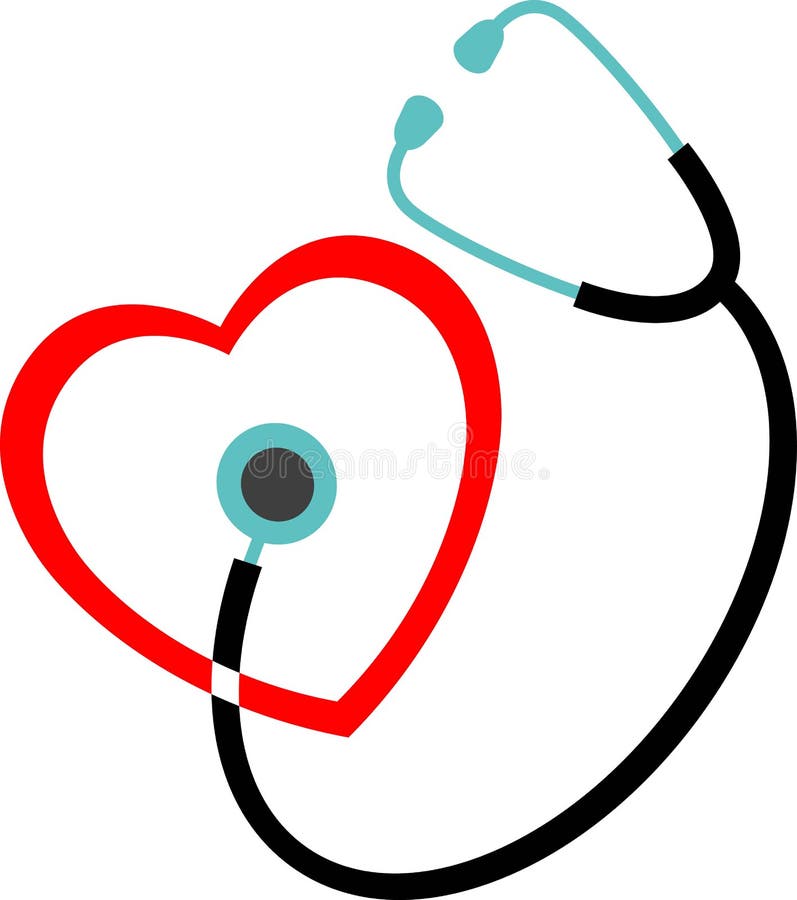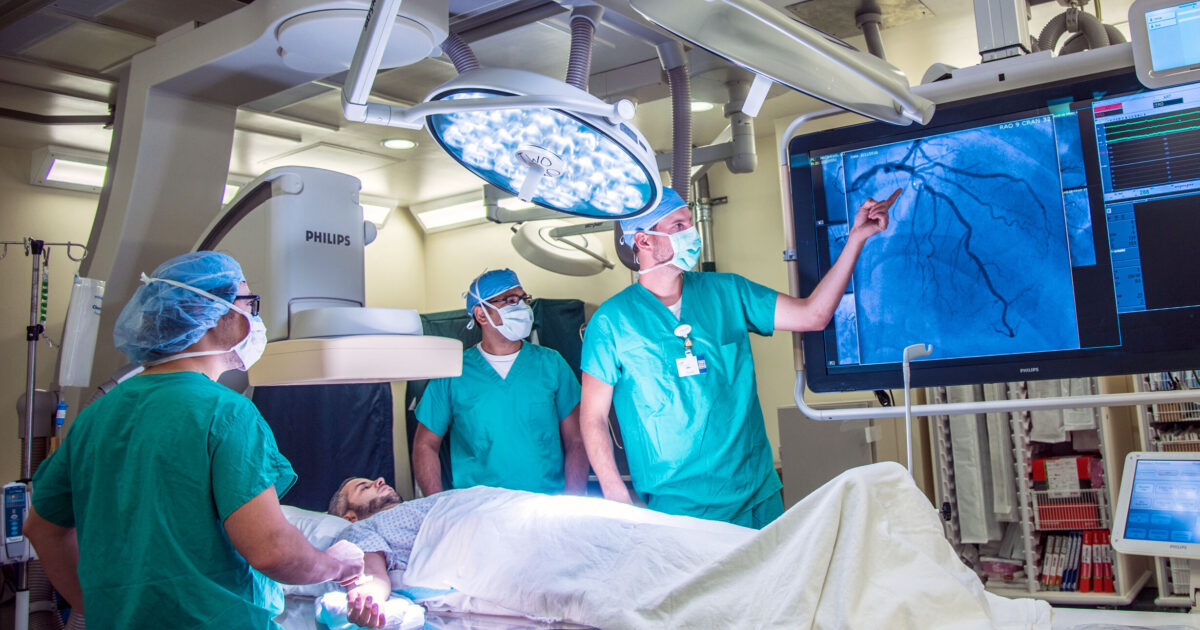Why Cardiology is more than just heart disease treatment
Why Cardiology is more than just heart disease treatment
Blog Article
Recognizing the Value of Cardiology in Modern Medical Care Services
Cardiology plays an important function in modern-day health care, particularly as heart illness proceeds to be the leading root cause of death worldwide. Developments in diagnostics and treatment have actually changed individual care, enabling earlier interventions and enhanced end results. The shift in the direction of precautionary cardiology encourages people to manage their health proactively. As modern technology proceeds to progress, the assimilation of cutting-edge services may further redefine cardiology's effect on public health and wellness, triggering a more detailed evaluation of arising patterns and their ramifications.
The Prevalence of Heart Problem and Its Effect on Public Wellness
Heart disease continues to be the leading reason of fatality globally, its influence expands much beyond individual clients to influence public wellness systems and economic climates. The high frequency of heart condition places a significant stress on medical care sources, necessitating raised financing for treatment, avoidance, and rehabilitation programs. Public health campaigns should attend to threat aspects such as excessive weight, smoking cigarettes, and less active way of livings, which contribute substantially to the climbing incidence of heart conditions.Moreover, the financial problem linked with heart condition is enormous, encompassing not only straight medical expenses however additionally indirect expenditures associated with lost efficiency and premature mortality. Communities encounter challenges in managing these prices, often bring about differences in healthcare accessibility and results. As the population ages and lifestyle-related risks continue to intensify, the urgency for efficient cardiology interventions comes to be paramount. Addressing heart disease is not only an issue of specific wellness but likewise an important public wellness priority.
Advancements in Cardiac Diagnostics and Imaging Techniques
Current innovations in heart diagnostics and imaging strategies have actually transformed the field of cardiology, boosting the ability to monitor and discover cardiovascular disease. Methods such as heart MRI, CT angiography, and echocardiography have come to be progressively innovative, giving comprehensive photos of cardiac structures and functions. These modalities enable the early recognition of problems like coronary artery condition, heart failing, and valvular disorders.Moreover, improvements in non-invasive diagnostics, such as wearable technology and remote surveillance gadgets, have actually encouraged clients and doctor. These devices facilitate real-time tracking of heart rhythms and other necessary indications, causing timely interventions. In addition, fabricated knowledge is being incorporated right into imaging analysis, boosting precision and performance in medical diagnosis.
Innovations in Treatment Choices for Heart Issues
Recent improvements in cardiology have actually led to considerable advancements in therapy options for heart disease. These include sophisticated surgical methods that enhance step-by-step outcomes and arising medicines that offer new methods for therapy. As the area develops, these technologies play a crucial role in boosting patient care and results.
Advanced Surgical Techniques
Developments in surgical methods have actually transformed the landscape of cardiology, offering brand-new hope for individuals with heart disease. Minimally invasive treatments, such as catheter-based treatments, have actually considerably minimized recovery times and medical facility remains. Techniques like robotic-assisted surgical treatment improve precision, permitting cosmetic surgeons to navigate complex physiological frameworks with greater accuracy. Furthermore, advancements in imaging innovation promote real-time visualization during treatments, boosting outcomes. Transcatheter aortic valve substitute (TAVR) exemplifies a development in dealing with aortic stenosis, allowing valve substitute without open-heart surgical procedure. In addition, hybrid methods that incorporate medical and catheter-based methods supply customized services for different cardiac concerns. These advanced medical methods not just boost individual safety yet also increase treatment alternatives, emphasizing the important duty of innovation in modern-day cardiology practices.
Emerging Drugs and Therapies
As the landscape of cardiology remains to develop, arising medicines and therapies play a critical role in enhancing treatment alternatives for heart problems. Innovations such as novel anticoagulants and progressed lipid-lowering representatives have changed the management of heart diseases, considerably decreasing individual morbidity and death. Additionally, the development of gene therapies and regenerative medicine supplies appealing avenues for dealing with conditions previously deemed irreparable. Clinical tests are continually disclosing the efficacy of these therapies, pressing the boundaries of conventional therapies. The integration of digital health and wellness technologies helps with tailored medication, permitting for customized therapy plans based on genetic and way of living elements. Jointly, these developments underscore the vibrant nature of cardiology, improving individual results and redefining standards of care in contemporary health care.
The Role of Preventive Cardiology in Individual Care
Preventative cardiology plays a vital function in patient treatment by focusing on the identification of threat variables that add to cardiovascular disease. With way of living adjustment methods and very early discovery strategies, healthcare companies can successfully reduce the incidence of cardiovascular occasions - Cardiology. This proactive strategy not just improves person end results however additionally promotes long-term health
Threat Factor Recognition
While cardio diseases continue to be a leading source of morbidity and mortality worldwide, efficient risk element recognition acts as a foundation of preventative cardiology. Recognizing danger aspects such as hypertension, hyperlipidemia, diabetic issues, and family background is essential for very early treatment. Health care professionals make use of various evaluating techniques to review these factors, enabling tailored safety nets. Additionally, understanding a person's lifestyle choices, such as smoking cigarettes and physical inactivity, even more notifies threat analyses. This detailed examination allows medical professionals to develop tailored treatment strategies targeted at mitigating threats. By prioritizing threat element recognition, healthcare systems can boost person outcomes and minimize the overall concern of cardiovascular illness, eventually adding to improved public health and wellness methods and resource appropriation.
Way Of Living Modification Strategies
A wide range of studies highlights the critical function of lifestyle adjustment approaches in lowering cardio illness threat. These strategies include dietary modifications, boosted exercise, smoking cigarettes cessation, and weight administration. By embracing a heart-healthy diet regimen rich in fruits, veggies, entire grains, and lean proteins, individuals can reduce cholesterol levels and high blood pressure. Normal exercise strengthens the heart and enhances total cardio health. Furthermore, giving up smoking substantially reduces the danger of cardiovascular disease and boosts recuperation rates for those with status quo. Weight management further adds to cardiovascular health by mitigating other threat variables such as diabetes mellitus and high blood pressure. Executing these way of life changes not just advertises Discover More private well-being but also works as a foundation of preventive cardiology in person care.
Very Early Detection Techniques
Way of life modifications greatly add to decreasing heart disease risks, yet they are most efficient when coupled with very early detection strategies. Precautionary cardiology emphasizes the value of determining potential heart problems before they intensify right into severe conditions. Methods such as blood stress monitoring, cholesterol testing, and progressed imaging innovations like echocardiograms play crucial duties in assessing cardio wellness. Biomarkers and genetic screening likewise improve the accuracy of early discovery, allowing for customized preventive strategies. Routine heart danger assessments encourage healthcare carriers to intervene proactively, possibly avoiding cardiovascular disease and strokes (Cardiology Jupiter). By incorporating these early detection approaches into routine treatment, clients can take advantage of find prompt lifestyle interventions and targeted therapies, eventually enhancing and enhancing end results high quality of life
Integrating Modern Technology Into Cardiology Practices
As innovations in technology remain to improve numerous fields, the assimilation of cutting-edge devices and systems into cardiology practices has come to be essential for enhancing client treatment and end results. Telemedicine systems allow cardiologists to monitor patients from another location, improving access to care while reducing the burden on healthcare centers. Wearable tools, such as smartwatches, allow continual heart price monitoring, alerting both patients and physicians to potential problems in real-time. Furthermore, synthetic knowledge (AI) is being made use of to assess substantial quantities of cardiac data, assisting in early diagnosis and personalized therapy plans. Advanced imaging strategies, consisting of 3D echocardiography, improve visualization of heart frameworks, resulting in much more specific treatments. Digital health and wellness documents (EHRs) enhance individual information administration, guaranteeing that cardiologists have immediate accessibility to essential data. With each other, these technological advancements are changing cardiology, promoting proactive monitoring and enhanced health and wellness outcomes for people with cardiovascular conditions.
The Importance of Person Education and Interaction
Person education and interaction play a pivotal duty in the management of cardio health and wellness. By equipping individuals with knowledge concerning their conditions, treatment alternatives, and way of life changes, doctor equip people to take an energetic role in their care. This positive strategy can lead to enhanced adherence to suggested drugs, dietary changes, and exercise routines, ultimately minimizing the threat of complications.Engagement also promotes a solid patient-provider partnership, motivating open interaction and trust fund. When patients feel notified and included, they are most likely to voice issues and ask concerns, which can you can try here result in much better professional end results. Additionally, educational resources, such as workshops or digital platforms, can enhance understanding and promote self-management techniques. In general, prioritizing client education and engagement is important for enhancing cardiovascular health, improving quality of life, and reducing medical care prices linked with heart diseases.
Future Trends in Cardiology and Their Potential Impact

Frequently Asked Inquiries
What Way Of Living Modifications Can Reduce Cardiovascular Disease Threat?
The present concern addresses lifestyle changes that can greatly lower heart condition risk. Dr Garcia. Taking on a balanced diet regimen, taking part in routine exercise, maintaining a healthy and balanced weight, handling tension, and staying clear of tobacco can especially enhance cardio health and wellness
How Can I Identify Very Early Signs of Heart Troubles?
Acknowledging early indicators of heart problems includes monitoring symptoms such as upper body pain, lack of breath, tiredness, and irregular heart beat. Timely recognition of these indicators can motivate necessary clinical evaluation and intervention for far better outcomes.
What Are the Differences In Between Cardiologists and Heart Surgeons?
The differences in between cardiologists and heart cosmetic surgeons exist in their duties; cardiologists mainly identify and take care of heart conditions via non-invasive methods, while heart specialists execute surgical procedures to remedy structural heart problems. Each plays an essential, unique duty.

Just how Typically Should I Obtain My Heart Health And Wellness Checked?
The regularity of heart medical examination differs based on individual danger elements. Normally, adults need to go through analyses each to 2 years, while those with current conditions may require more constant analyses as encouraged by healthcare specialists.
What Role Does Genes Play in Heart Condition Danger?
Genetics greatly affects heart condition threat, with familial patterns suggesting inherited problems. Particular genetics can predispose people to hypertension, cholesterol problems, and other cardiovascular troubles, highlighting the significance of hereditary testing in evaluating heart health and wellness. Heart disease stays the leading reason of fatality worldwide, its impact expands far past specific patients to impact public wellness systems and economies. Public health and wellness campaigns should attend to threat elements such as weight problems, smoking cigarettes, and sedentary way of livings, which contribute substantially to the increasing incidence of heart conditions.Moreover, the financial worry associated with heart illness is immense, incorporating not only straight clinical prices but also indirect expenditures related to shed performance and early death. Preventive cardiology plays a vital duty in client care by focusing on the identification of risk elements that add to heart disease. Artificial intelligence (AI) and device knowing are boosting diagnostics and client tracking, making it possible for early detection of heart conditions. The distinctions between cardiologists and cardiac specialists exist in their functions; cardiologists mostly identify and handle heart conditions with non-invasive approaches, while cardiac surgeons perform medical treatments to remedy structural heart issues.
Report this page